There’s a lot being said and written about the Turkish UAV Bayraktar Kizilelma, and today we will share what is known about this drone.
The famous Turkish strike tactical UAV Bayraktar TB2 has become a true legend in Ukraine. Early in the full-scale invasion, it made Russian invaders feel its wrath firsthand. Tanks and artillery systems were set ablaze, and there was no escape for anyone. This UAV has become a genuine symbol of the Ukrainian people’s resistance. We have previously written about this remarkable drone, and those interested can read it. But today, we will focus on another UAV from the Turkish company Baykar Makina – the Bayraktar Kizilelma. We will discuss its development history, technical and functional capabilities, and future prospects. So, let’s dive into it step by step.
Read also: All About the NGAS Tanker Aircraft Project and Its Prospects

TABLE OF CONTENT:
What is interesting about the Bayraktar Kizilelma UAV?
The Bayraktar Kizilelma is a new multifunctional combat drone developed by the Turkish company Baykar Makina. The project was announced in 2021, and the UAV is designed to be one of the newest and most powerful drones in the world. Kizilelma is the first Turkish drone to feature a jet engine. Unlike its propeller-driven predecessors, it boasts impressive speed, altitude, and maneuverability.

Bayraktar Kizilelma is interesting for many reasons:
- High maneuverability: due to its design, this drone is able to perform complex maneuvers and operate effectively in various conditions.
- Range: It can fly long distances, making it extremely effective for long-range reconnaissance and missions.
- Various weapons: Kizilelma can carry various types of weapons, allowing it to perform a wide range of tasks.
- Autonomous control: Equipped with advanced technology, the UAV can operate autonomously, which reduces risks for operators.
- Innovative technologies: contains the latest navigation and control systems that ensure high accuracy and efficiency.
These characteristics will make the Bayraktar Kizilelma an essential component of modern military operations.
This drone is part of Turkey’s strategy to strengthen its defense industry and engage in the development of cutting-edge technologies. The Bayraktar Kizilelma has significant potential for use in various military operations and peacekeeping missions.
Read also: Everything Known About the Experimental UAV General Atomics A2LE
The history of Bayraktar Kizilelma
In recent years, Turkey has established a significant presence in the field of combat aircraft manufacturing. Turkish drones have proven to be effective and lethal weapons in military conflicts.
This success is primarily attributed to the Turkish defense company Baykar Makina, which designs and produces various combat drones. The flagship products of Baykar include the legendary Bayraktar TB1, Bayraktar TB2, and Bayraktar Akinci. Currently, this Turkish company is developing the state-of-the-art combat drone Kizilelma. The Kizilelma program is part of Turkey’s MIUS program, which aims to create a high-tech unmanned combat aerial system.
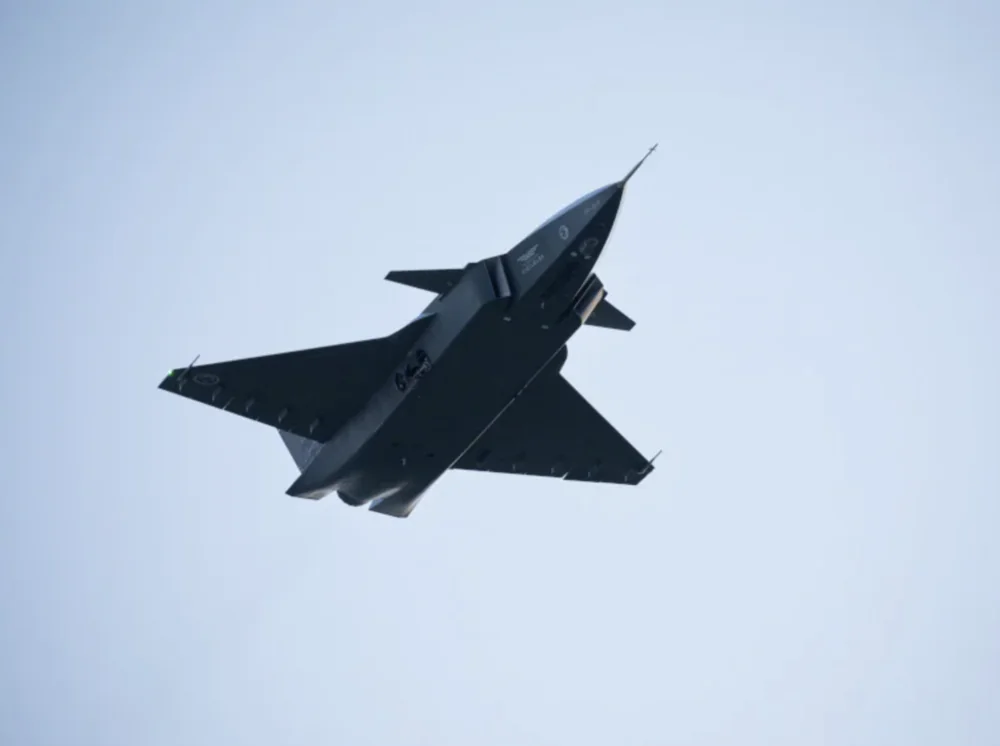
Work on this drone began back in the 2010s. The first conceptual designs for the future combat drone were created by Turkish engineers in 2013. However, public information about the project, along with the first illustrations, only emerged in July 2021, when Baykar shared them on their Twitter page.

On March 12, 2022, the developer announced that the new combat jet drone would be named Bayraktar Kizilelma. At that time, Selçuk Bayraktar, the technical director and co-owner of Baykar Makina, reported that the prototype of the drone was already in the final stages of assembly. The premiere of the first model of the new UAV took place during the 5th Aviation Technology Festival Teknofest, organized by the Turkish T3 Foundation and the Ministry of Industry and Technology of Turkey. The event was held from August 30 to September 4, 2022, at Çarşamba Airport in Samsun.

The first engine start on the flight prototype of the Bayraktar Kizilelma was conducted on September 19, 2022. Two months later, on November 20, the drone underwent its first taxiing and run tests at the Akinci Flight Training and Test Center in Çorlu (Tekirdağ Province in northwestern Turkey). On December 3, the UAV made its first takeoff over the runway, and finally, on December 14, it completed its inaugural flight.

The flight lasted 18 minutes and was successful. The first flight prototype of the Bayraktar Kizilelma is named in honor of Özdemir Bayraktar, the founder of Baykar, who passed away on October 18, 2021. He is the father of the current leaders and co-owners of Baykar Technologies – its CEO Haluk Bayraktar and Technical Director Selçuk Bayraktar. Özdemir’s name is also reflected in the conditional tail registration number painted on the vertical stabilizer of the drone – TC-OZB.
It’s worth noting that all civilian aircraft and helicopters registered with the Turkish aviation authority carry the TC prefix, but their registration numbers must consist only of Latin letters. In this case, the specific Turkish letter “O” was used, which is the initial letter of Özdemir Bayraktar’s name. The flight tests for the Bayraktar Kizilelma continued, with the second flight in Çorlu occurring on January 23, 2023. This flight was longer and focused on evaluating the drone’s stability and maneuverability in the air, calibrating the control system, and testing other onboard equipment.
The wait for the next test flight was short. On March 30, 2023, the Kizilelma unmanned strike fighter, equipped with a Ukrainian-produced jet engine, successfully completed its third flight. During this test flight at the AKINCI training and testing center in Çorlu, the Bayraktar Kizilelma underwent checks of its identification system at mid-altitude.
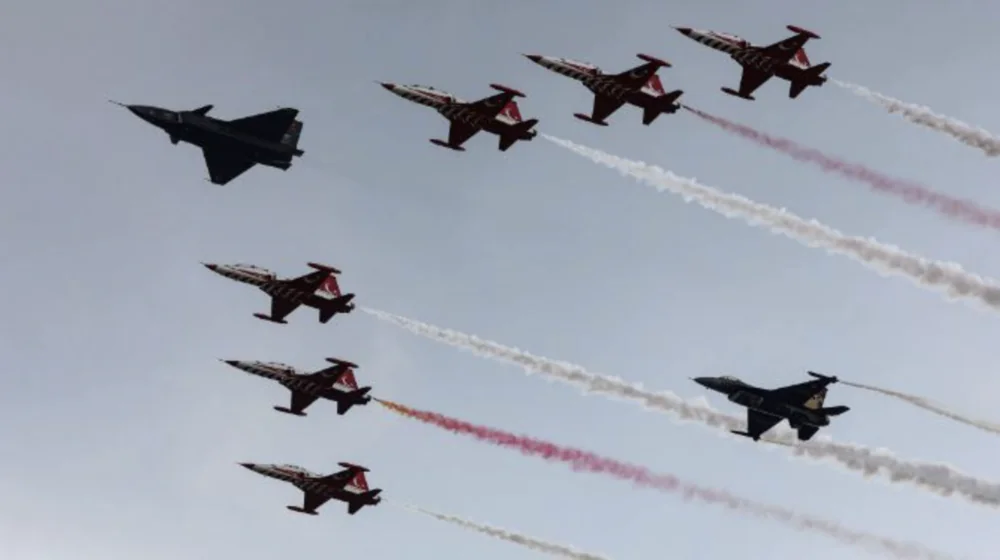
On September 26, 2024, the production prototype of the Bayraktar Kizilelma successfully completed its first flight. This was a brief test flight, marking the launch of production for these cutting-edge unmanned aerial vehicles equipped with jet engines by the Turkish company Baykar.
Design of the Bayraktar Kizilelma UAV
The Bayraktar Kizilelma is a combat jet unmanned aerial vehicle (UAV) designed with a stealthy profile, featuring a canard configuration and extensive use of composite materials. It is equipped with a trapezoidal wing with overpressure, all-moving forward horizontal tail surfaces, and dual-finned vertical stabilizers with two-section rudders, which are set at an angle of approximately 30° from the vertical.

The wing’s sweep angle and the leading edge of the forward horizontal stabilizer are approximately 45°. Each wing’s trailing edge features five sections of elevons (flaperons). The engine air intakes are side-mounted and flat. The landing gear is a tricycle configuration, retractable, with telescopic struts, featuring one wheel on the nose gear and each main gear.

For the initial flights, the landing gear was fixed in the extended position, and its compartments in the fuselage were closed with solid “joints” instead of doors. The fuselage features a distinctive ribbing and flat bottom and side surfaces.
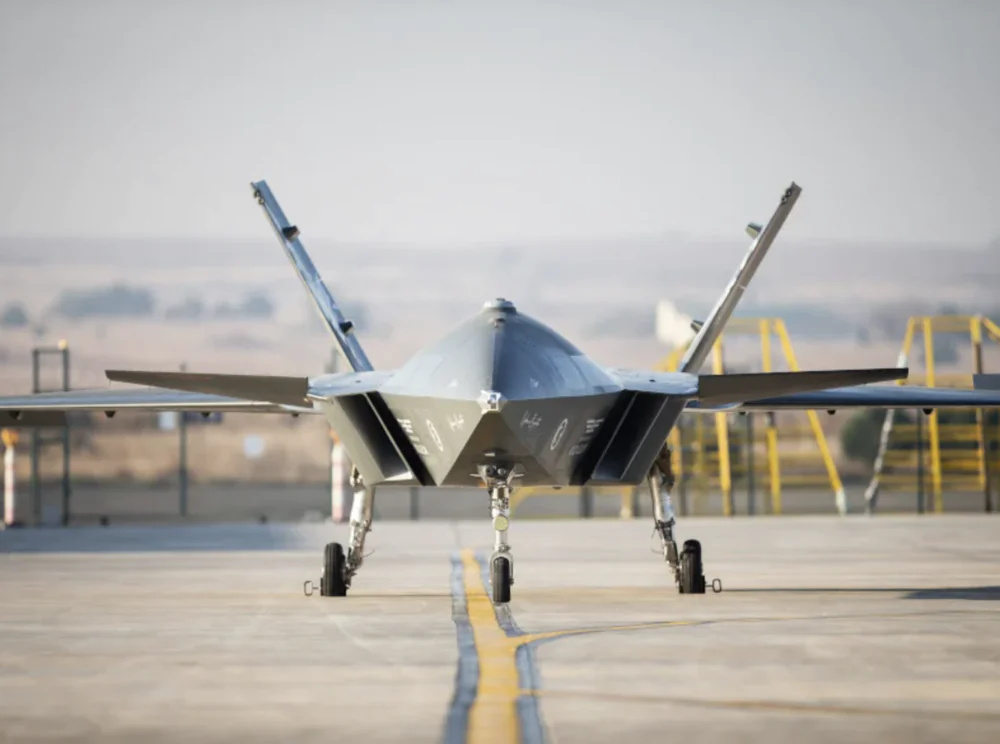
The length of the UAV is 14.7 meters, with a wingspan of 10 meters and a height of 3.3 meters. According to the developer, the maximum takeoff weight of the drone reaches 6000 kg.
Read also: Little-Known Pages of Aviation History: Bell X-1 – The First Supersonic Aircraft
Ukrainian engines for Bayraktar Kizilelma UAVs
The powerplant of the initial variant of the Bayraktar Kizilelma includes a single dual-circuit turbojet engine, the AI-25TLT, produced by the Ukrainian State Design Bureau “Ivchenko-Progress.” An agreement between Baykar and Ivchenko-Progress, which had previously supplied turbo-prop engines AI-450T for the Bayraktar Akinci UAV, was signed in November 2021.
This engine is an adapted version of the Soviet AI-25TL, producing a thrust of 1720 kgf, which has been used for over fifty years in Czech training aircraft like the L-39. The base engine, AI-25TL, weighs approximately 350 kg, with a specific fuel consumption of 0.6 kg/(kgf-hour) in takeoff mode and 0.815 kg/(kgf-hour) in cruising mode.
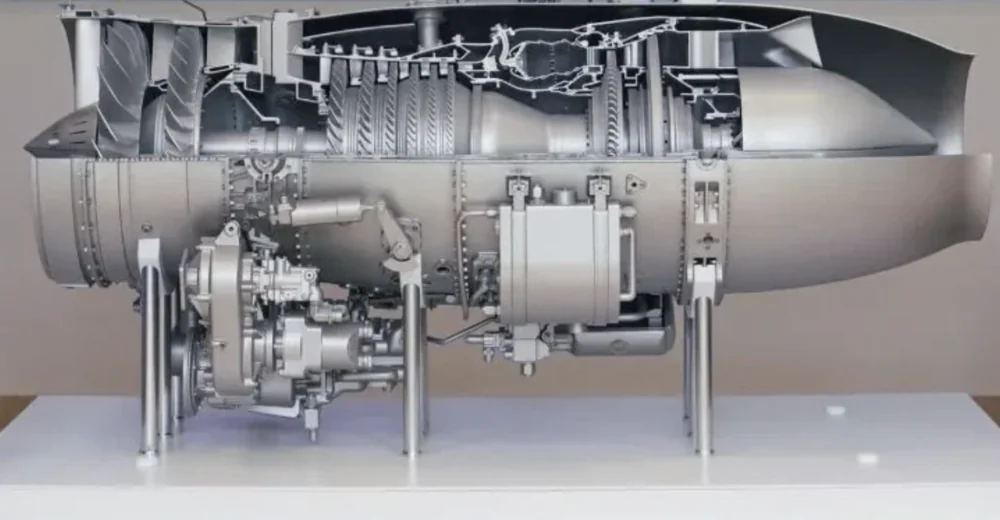
Later, a contract was signed between Baykar and the Ukrainian State Design Bureau “Ivchenko-Progress” for the supply of the AI-322F engine. This engine was instrumental in enabling the Bayraktar Kizilelma UAV to conduct its first test flight in 2023. The exact number of engines and their costs have not been disclosed. However, it appears that these are intended for pre-series machines. Following the successful completion of all tests, serial production of the AI-322F for the Turkish combat drones is expected to be established.

The AI-322F is the latest and only Ukrainian turbojet two-shaft engine with an afterburner. It is designed for modern supersonic training-combat and light combat aircraft with moderate supersonic speeds. The turbojet engine was developed collaboratively by the “Ivchenko-Progress” company and the Ukrainian aviation engine manufacturer “Motor Sich.”
The AI-322F engine boasts a thrust of 4,200 kgf with a weight of only 560 kg. Such specifications make it ideally suited for the UAV fighter project MIUS, which aims for a maximum speed close to supersonic, an operational altitude of around 12 km, and a payload capacity of 1 ton for full missile armament.
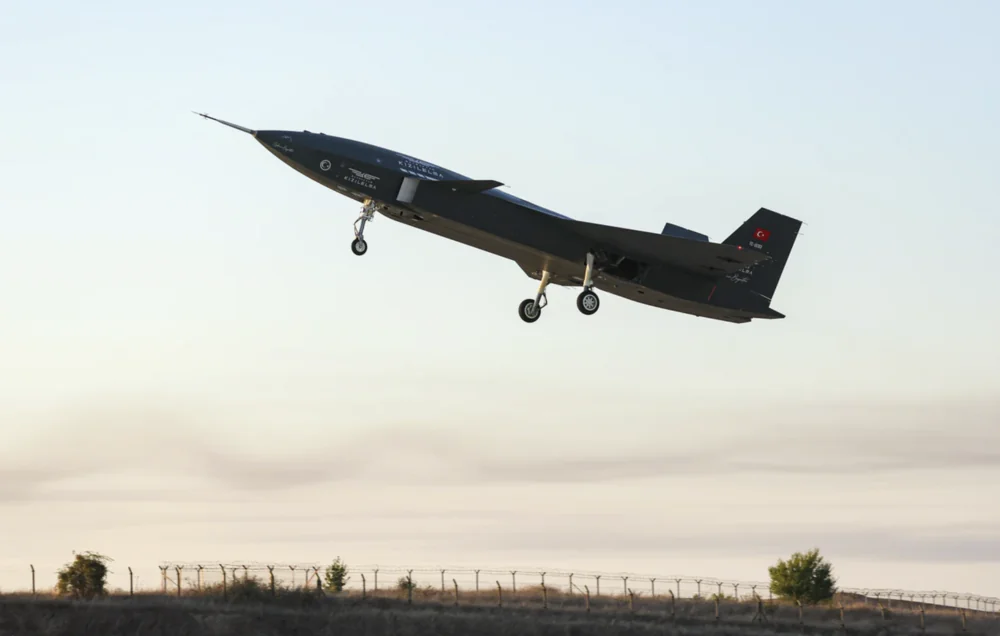
It remains unclear whether the collaboration between the Turkish and Ukrainian companies will continue. The Turkish side has even emphasized the possibility of manufacturing the UAVs at a plant in Ukraine.
There is a chance that Baykar will have to wait for the development of the TF6000 two-shaft turbojet engine being designed by specialists from Tusas Engine Industries (TEI) in Turkey. A full-scale model of the engine, with a bypass ratio of 1.08 and an expected thrust of around 2,700 kgf at maximum mode, was first presented at the Teknofest 2022 exhibition in late summer. According to the Anadolu Agency, testing of the TF6000 prototype was scheduled to begin by the end of 2023, but no information has emerged regarding this so far.
The engine measures 2,250 mm in length and has a cross-section of 860 x 1,100 mm. It features a two-stage fan, a six-stage high-pressure compressor, and single-stage high- and low-pressure turbines. It is reported that the specific fuel consumption will be 0.7 kg/(kgf·h). Furthermore, there are plans to develop a variant of the TF6000 with an afterburner, aiming for a thrust of about 4,500 kgf in full afterburner mode.
Read also: Best Ukrainian Military UAVs, Part 1: Reconnaissance and Targeting
Ukrainian engines for Bayraktar Kizilelma UAVs
According to official company data, the Bayraktar Kizilelma UAV can reach speeds of up to Mach 0.9 (around 960 km/h) and cruise at Mach 0.6 (about 640 km/h) at an altitude of 10,700 meters. Its practical ceiling is approximately 13,700 meters. The operational range is estimated by the developer at over 900 km (500 nautical miles), with a maximum flight duration of 5 hours.

According to the developer, standout features of the new Turkish combat drone include fully automated takeoff and landing, low radar visibility, high speed and maneuverability, significant payload capacity and combat range, data exchange capability with the operator both within and beyond line of sight, and the ability to operate from short runways, including the flight decks of universal landing ships (light aircraft carriers).
Read also: Why Passenger Planes Don’t Have Parachutes
Armament of Bayraktar Kizilelma
The base model, Bayraktar Kizilelma-A, can carry various combat payloads with a total weight of up to 1,500 kg. Its planned arsenal includes a wide range of air-launched weapons, such as SOM-J cruise missiles with a launch range of 250 km, air-to-air and air-to-ground guided missiles, Mini Akilli Mühimmat (MAM) family bombs of various calibers (both guided and unguided), unguided rockets, as well as other munitions and specialized containers. These can be mounted on six hardpoints under the wings and in internal fuselage compartments.
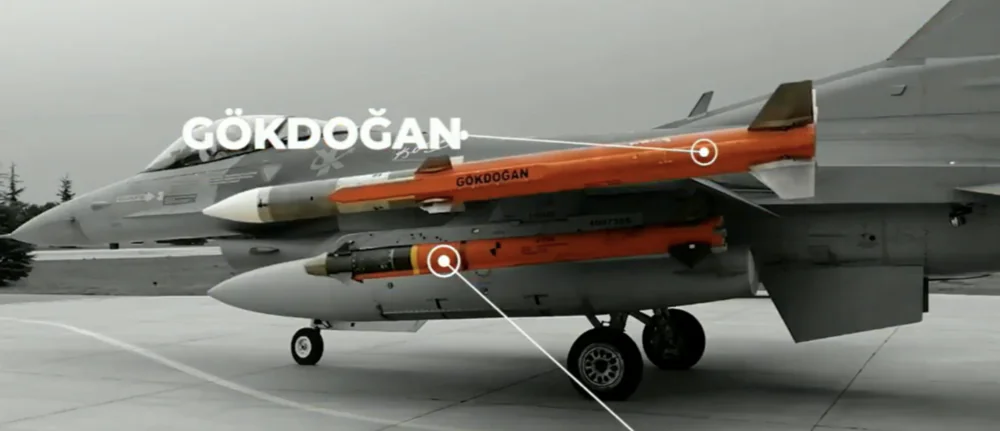
Також заявлено, що БПЛА Bayraktar Kizilelma здатний вести вогонь ракетами “повітря-повітря” Bozdogan і Gokdogan.
Read also: Ukrainian Su-27 Spotted for the First Time with Lightweight GBU-39 Cruise Bombs
Complex of on-board electronic equipment
The onboard electronic suite of the drone is set to include an active phased array radar (AESA) developed by a Turkish defense industry company, along with an electro-optical observation and targeting system.
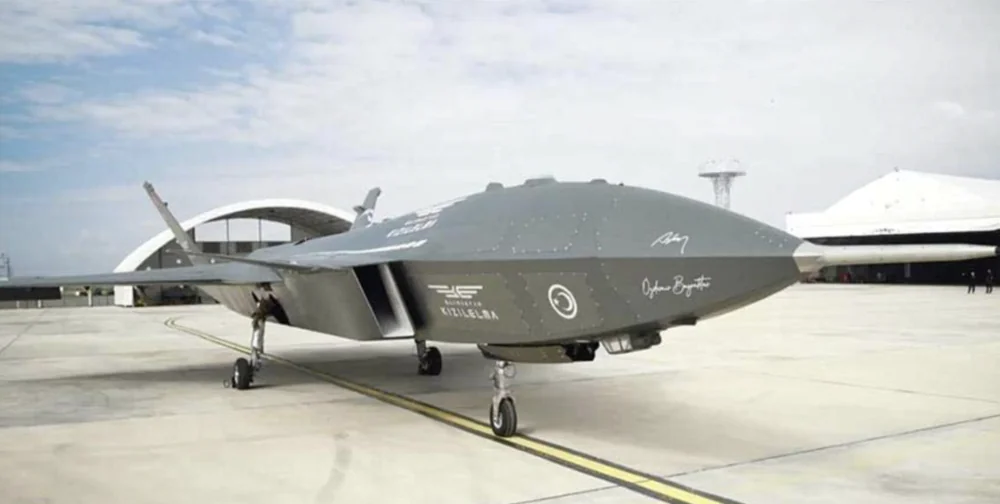
This equipment includes Aselsan’s CATS (Common Aperture Targeting System) for target acquisition and guidance, an electronic warfare pod, a signals intelligence module (also domestically developed), and other specialized systems.
Read also: Why Airplane Portholes Are Round
Technical characteristics of the Bayraktar Kizilelma UAV
- Carrying capacity: 1500 kg
- Maximum takeoff weight: 6000 kg
- Powerplant: 1 × AI-25TLT or AI-322F or TEI TF-6000
- Launch method: automatic, from the deck or runway
- Landing method: automatic landing
- Maximum speed: 900 km/h
- Cruising speed: 740 km/h
- Combat range: 930 km
- Flight time: 5 hours
- Ceiling: 12000 м
- Operating altitude: 10668 м.
Development prospects of Bayraktar Kizilelma
Turkey has ambitious plans, confidently believing that their new Bayraktar Kizilelma UAVs will spark a true revolution in the world of combat aviation.
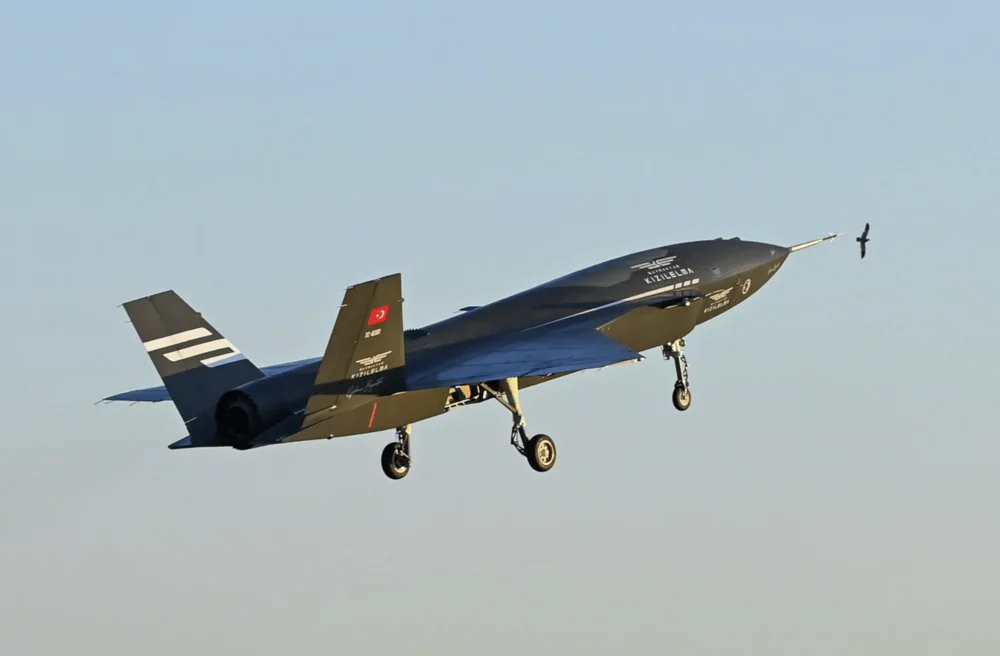
At Teknofest 2022, it was also revealed that Baykar is developing a new version of the Bayraktar Kizilelma UAV – the twin-engine Kizilelma-C, which is expected to be equipped with two AI-322F or TF6000 engines. However, further details about this combat drone modification have not yet been disclosed. The Bayraktar Kizilelma drones are planned for deployment with both the Turkish Air Force and Navy. For the Air Force, this mainly involves the supersonic Bayraktar Kizilelma-B model, which will operate in coordination with fighter jets, including Turkey’s upcoming fifth-generation TF-X fighters.
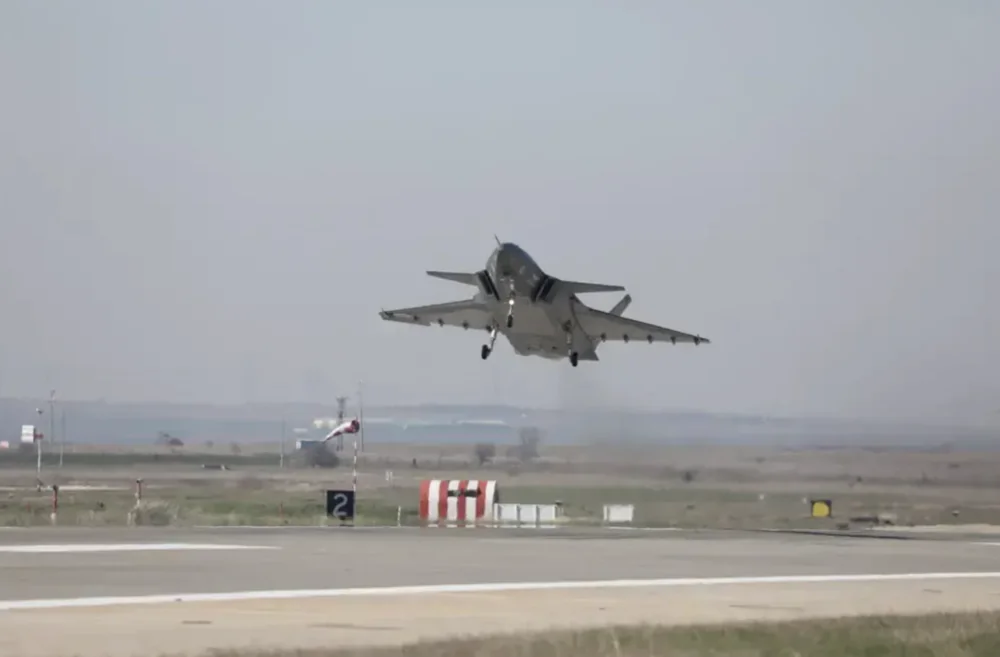
In the Navy, these drones will be able to operate not only from coastal airfields but also from the deck of Turkey’s newest amphibious assault ship, Anadolu (TCG Anadolu, L-400). This vessel began sea trials in June 2022 and joined the Turkish fleet in May 2023. Notably, Anadolu is a multi-role amphibious assault ship (LHD) for the Turkish Navy that can be configured as a light aircraft carrier, making it the world’s first carrier specifically designed for unmanned aerial vehicles.
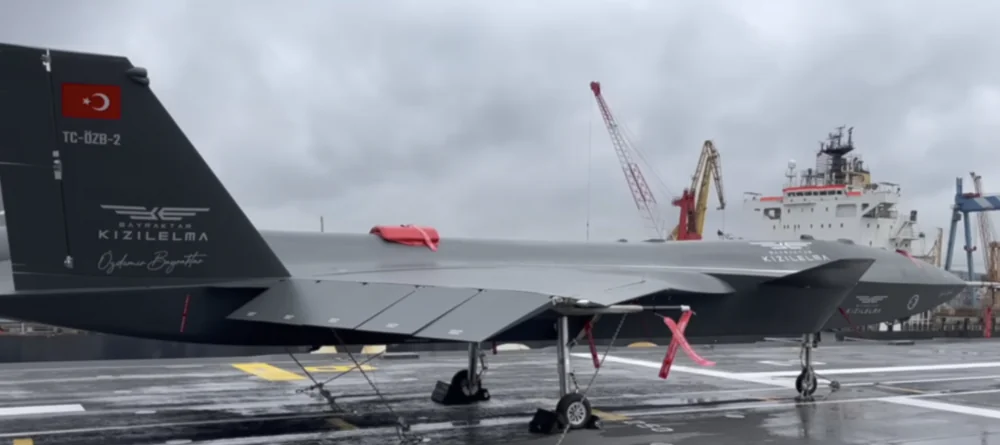
Back in July 2021, Baykar released illustrations showing the combat drone it is developing under the MIUS program, demonstrating its takeoff and landing capabilities on the flight deck of the Anadolu-class UDC. Baykar’s Technical Director, Selçuk Bayraktar, later confirmed that the new UAV would be capable of taking off without a catapult and landing on the ship using a tailhook.
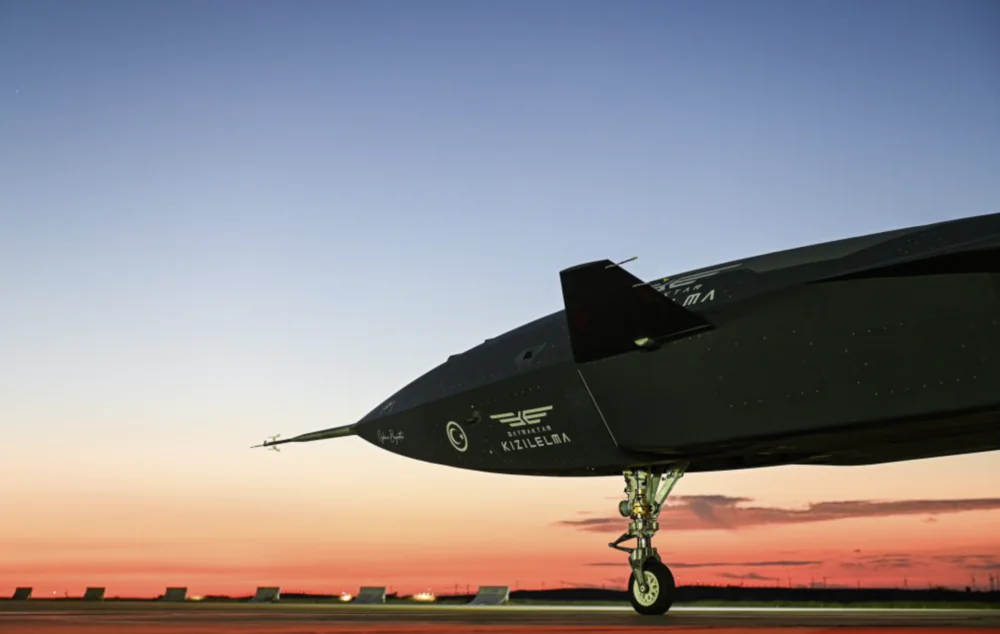
The company believes that “the Bayraktar Kizilelma will revolutionize aviation, enabling its use in air combat against traditional fighter jets. While it may be premature to compare it to the aircraft used in many countries after its first flight, once fully operational, it will surpass the F-35 in several respects.”
However, the leadership’s commitment to the idea of air dominance through robotic systems in the foreseeable future is well known. They argue that with the advent of fifth-generation fighters, the era of manned fighters is coming to an end, and no new manned combat aircraft will be developed. Unmanned systems are poised to become a central element on the battlefield of the future.
However, such a prediction currently seems overly optimistic. Unmanned aerial vehicles, even the most advanced ones, will not be able to fully replace their manned counterparts in combat formations for a long time. This is clearly demonstrated by the ongoing programs in various countries aimed at developing next-generation combat aviation systems. Nevertheless, this does not diminish the achievements that Baykar is increasingly showcasing with confidence.








